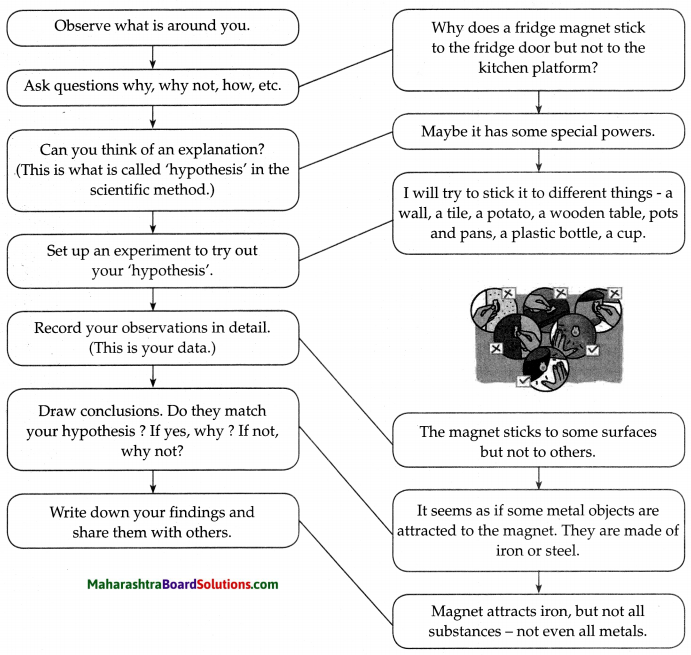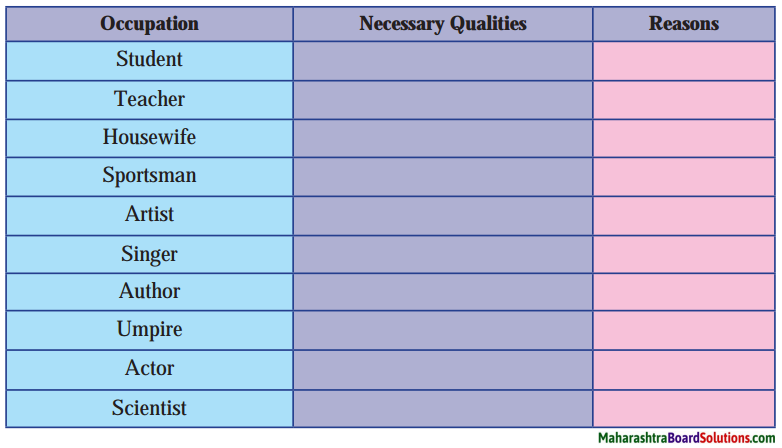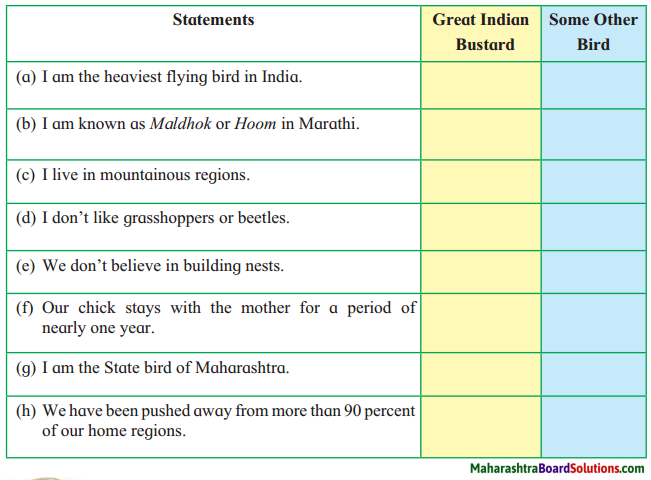Balbharti Maharashtra State Board Class 6 English Solutions Chapter 2.3 A Wall Magazine for your Class! Notes, Textbook Exercise Important Questions and Answers.
Std 6 English Lesson 2.3 A Wall Magazine for your Class! Question Answer Maharashtra Board
Class 6 English Chapter 2.3 A Wall Magazine for your Class! Textbook Questions and Answers
Question 1.
Prepare a notice asking students to contribute towards the school magazine.
Answer:
PVR Public School, Mumbai
Notice
Class Wall Magazine
29th June, 2016
Students of Standard VI are invited to contribute towards the Wall Magazine to be put up in your class. You could get different articles from old newspapers or periodicals. You could also write short stories, poems, jokes, riddles and much more. All materials brought should be handed over to your class representatives. Hurry!! Come up with different ideas and make a unique Wall Magazine in your class.
![]()
Question 2.
Ways to plan a Wall Magazine.
Answer:
- Create a theme – e.g., craft ideas, I need help, recipes, etc.
- Gather material from students.
- See which matter would fit the theme.
- Use creativity in preparing the title.
- Decide how to arrange the content.
- Make the wall magazine colourful.
- Avoid spelling mistakes.
- Pictures and articles should be put in the right places.
Question 3.
Importance of Team Work
Answer:
A Wall Magazine teaches students how to cordially work in groups, bringing out the best in everyone. It inculcates values such as sharing, tolerance, acceptance, etc.
- Brings about efficiency
- Better understanding
- Unique ideas
- Brings out the best in each student
- Makes work easier
- Makes work fun
![]()
Question 4.
List of topics that can be included on a Wall
Answer:
- Stories
- Poems
- Puzzles
- Riddles
- Craft ideas
- Informative articles
- Jokes I need help
- Board games
- Book reviews
- Quizzes
- Study tips
- Health tips
- Fashion tips
- Beauty tips
- Gardening tips
- Recipes
- Solve my problem
- Science comer
- Photography comer
- Baby talk
You can add more to the list.
![]()
A Wall Magazine for your Class! Summary in English
Introduction:
A wall magazine is a must for every class. It encourages and motivates students to shed their inhibitions and contribute their share of talent towards the magazine. It is a wonderful way to encourage students to read, write and find articles to be put up on the wall magazine. The topics could range from stories, poems, puzzles, riddles, quizzes, games, study tips, health tips, gardening tips, fashion designing, science and recipes. This would be an activity where most students would love to participate.
6th Std English Balbharati Textbook Solutions
- The Clothesline Class 6 Question Answers
- The Worth of a Fabric Class 6 Question Answers
- A Wall Magazine for your Class! Class 6 Question Answers
- Anak Krakatoa Class 6 Question Answers
- The Silver House Class 6 Question Answers
- Ad‘wise’ Customers Class 6 Question Answers
- Yonamine and Bushi Class 6 Question Answers









